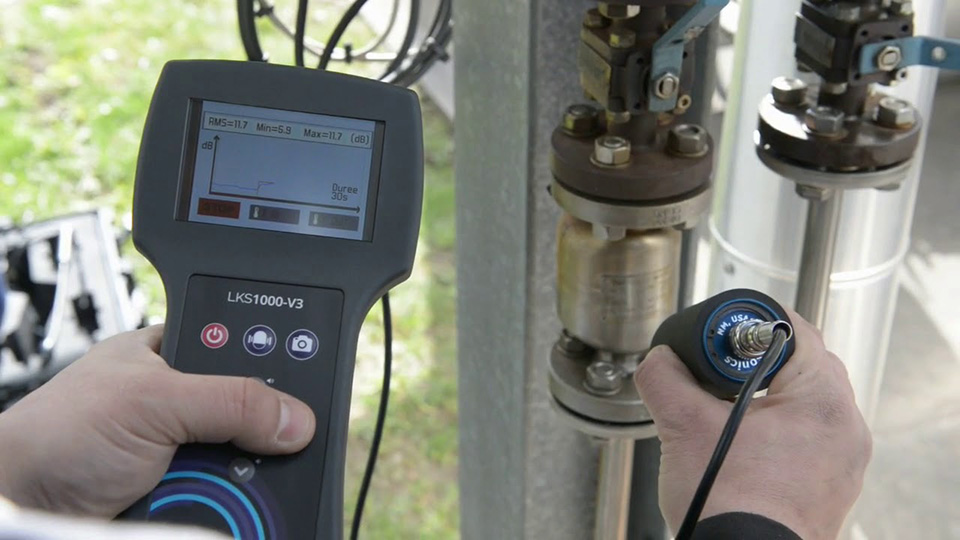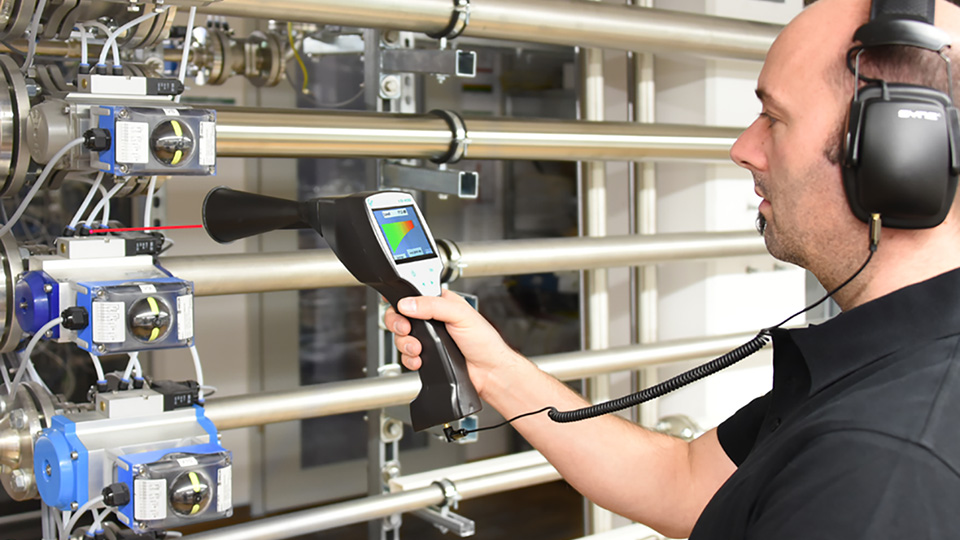How to Detect an Air Leak in the Compressor?
7 December 2023, Thursday
Air leaks in compressors may occur for several different reasons. Here are some of the most common causes:

Wear of seals or gaskets: Wear of seals or gaskets in compressors may cause air leaks over time.
Failure to close the valves adequately: Compressor valves can cause air leaks if they are not sealed in an airtight manner. Make sure that the valves are closed properly.
Damage to air hoses and connection points: Air hoses and connection points can cause air leaks as a result of cracks or other damage.
Blockage of filters: Air filters may become clogged over time, resulting in air leaks.
Overload of compressor: If the compressor is overloaded, this can also lead to an air leak. This indicates that the hoses or pipes in the outlet line of the compressor are leaking.
An air leak reduces the efficiency of the compressor, causing a pressure drop and can lead to extra energy consumption. Therefore, it is important to detect and correct air leaks. Air leak detection devices may be used to detect air leaks. These devices increase the air pressure in order to determine the source of the leak and locate the leak.
How to Detect an Air Leak in the Compressor?

Detection of air leaks in the compressor is important for saving energy and ensuring regular maintenance. There are several different methods for detecting air leaks. Here are some methods:
Hearing: You may hear an air leak as a high-pitched whistle when the compressor is running. This sound is usually more noticeable near a pipe or hose with an air leak.
Soapy water test: Soapy water can reveal the leak in the location of the air leak. To perform this test, apply soapy water to the suspected leakage area and observe if foaming occurs at the location of the air leakage.
Thermal camera: Thermal cameras can detect temperature changes in the location of an air leakage. The temperature drop at the location of the air leak can be detected by the thermal camera.
Pressure gauge: A pressure gauge can help to detect air leakage by measuring the pressure difference at the outlet line of the compressor and at the inlet of the equipment.
Air leak detection devices: Air leak detection devices detect the source of the leak by increasing the air flow at the compressor outlet. These devices are one of the most accurate methods for detection of air leaks.
Once an air leak has been detected, it is important to repair the leak. Air leaks that are not repaired can result in loss of energy and reduced compressor life.
What Are The Air Leakage Areas In The Compressor?
Compressors are equipment that are used to compress air and air leaks can reduce efficiency. The areas with air leaks are as follows:
Hoses and fittings: Hoses and fittings connected to the compressor are potential leak points that can cause air leaks. These parts shall be tightly fitted and periodically checked to ensure tightness.
Compressor valves: Compressor valves are another location where air leaks can occur. The tightness of these valves shall be inspected and replaced if necessary.
The compressor itself: The seals and gaskets inside the compressor can wear over time and cause air leaks. Thus, regular maintenance of the compressor and replacement of parts are required.
Pressure reducers: Pressure reducers are another component that can cause air leaks. These devices shall be periodically inspected and sealed.
Pipelines: Compressors are usually connected to pipelines for the distribution of air. The connection points and throttle valves of these pipes are the points that can cause air leaks. Therefore, pipes shall be periodically inspected and sealed.
What To Do In Case Of an Air Leak in the Compressor?
If an air leak is detected in the compressor, you may follow the steps below:
Identify the source of leak: Use one of the methods mentioned above to determine the location of the air leak in the compressor. Air leaks may be caused by hoses, fittings, valves, or other components.
Repair the leak: When the source of the leak has been identified, you can start the repair process. The repair process may vary depending on the cause and size of the leak. Small leaks can be resolved by tightening gaskets or hoses or by replacing the seals. For larger leaks, it may be necessary to replace the parts.
Test the compressor: After the repair is completed, test the compressor, and check for any air leaks. If the air leakage is still present when the compressor starts, you may need to repeat the repair process.
Perform regular maintenance to prevent air leaks: It is important to carry out regular maintenance to prevent air leaks in the compressor. Regular inspection and replacement of parts such as gaskets, seals, hoses, and fittings can prevent wear and tear that can lead to air leaks.
Air leaks reduce the efficiency of the compressor and can lead to extra energy consumption.
